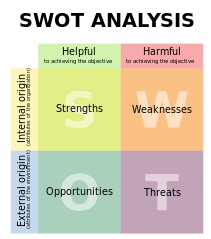 Oh, the wonder of beautifully crafted taglines. Those few strategically selected words that sum up everything your business stands for and what you want your target audience to know about you. They’ve made companies fortunes by telling people what makes them standout in the sea of sameness. Consider FedEx’s brilliant “When it absolutely, positively has to be there overnight.” Nine simple words that tell FedEx buyers precisely what they’re going to get, while simultaneously informing all of its employees what their mission is. What if FedEx’s slogan was “We ship things!”? Would Nike be as successful if it allowed an executive committee to red-pencil “Just do it” into “When you need great shoes”? How would BMW’s vision change if “The Ultimate Driving Machine” became “Our cars are fun to drive!” My point is that these companies didn’t settle for weak platitudes or vague, generalized statements that could have applied to their competitors. Nope, they decided that they weren’t going to settle. Instead standing out and differentiating themselves was business-critical. Can the same be said for your company and its marketing? Do you have a themeline or slogan that makes you stand out? Is it unique and memorable? Or is it mediocre because somewhere down the line, people settled?
Oh, the wonder of beautifully crafted taglines. Those few strategically selected words that sum up everything your business stands for and what you want your target audience to know about you. They’ve made companies fortunes by telling people what makes them standout in the sea of sameness. Consider FedEx’s brilliant “When it absolutely, positively has to be there overnight.” Nine simple words that tell FedEx buyers precisely what they’re going to get, while simultaneously informing all of its employees what their mission is. What if FedEx’s slogan was “We ship things!”? Would Nike be as successful if it allowed an executive committee to red-pencil “Just do it” into “When you need great shoes”? How would BMW’s vision change if “The Ultimate Driving Machine” became “Our cars are fun to drive!” My point is that these companies didn’t settle for weak platitudes or vague, generalized statements that could have applied to their competitors. Nope, they decided that they weren’t going to settle. Instead standing out and differentiating themselves was business-critical. Can the same be said for your company and its marketing? Do you have a themeline or slogan that makes you stand out? Is it unique and memorable? Or is it mediocre because somewhere down the line, people settled?
Let’s face it, we have a tendency to settle. It’s almost human nature. We settle for something that’s not just quite right, an outfit that isn’t our best look, a job that doesn’t maximize our talents or an ad or website page that’s okay or just “good enough.” While the act of compromise in life, relationships and particularly conflict is an admirable trait, compromise or “settling for” in marketing is a death knell.
You see, the whole point of your marketing activities is to get noticed; get engaged with your audience; and have your work be acted upon to bring in the business. Alternatively, anonymity, swimming in the center of a school of other fish, may be a good survival tactic if you are an anchovy, but it is not a good survival tactic for business. So you have to wonder why so much marketing – and so many marketers – feel the need to play “follow the leader” with respect to marketing trends.
The logic is that if others have done something successfully, you just need to do the same thing. Well, maybe. And then again, maybe not. As we all know, breakthrough products and breakthrough marketing campaigns are not achieved through conformity. Note the word “break” in breakthrough. These are the products and campaigns that break the rules. These are the products and campaigns that use insight, intuition, experience, sensitivity to the marketplace – and arguably the most important thing….courage – to do things differently. To break away from the status quo.
It is certainly true that most companies don’t have that innate insight and courage to be successfully different. We can’t all be like Steve Jobs. But for those are willing to do things differently and well, for those who want their companies to stand out, then the only rule that matters is: You cannot achieve exceptional success through conformity.
To that end, you can have your brand and product/service stand out if you’re willing to take a risk. For starters, ask yourself these three questions:
1. What’s can you say about your company that’s seen as a unique or fresh alternative to your competitors? This can range from the product or service you offer to the way you do business to that of sharing your wisdom. Think beyond the obvious. Dig deeper. Ask yourself a bunch of “So what does that mean?” and “Why would our customer care?” with each answer that’s given.
2. What medium makes the most sense for your brand? The goal is to create a campaign that drives conversation and ultimately revenue. So what imaginative or different ways (to what you’ve been doing) should be explored and implemented. Doing the same thing from one campaign to another, especially given all of the new technological and interesting messaging channels out there, is not only boring but could be seen by management as, well, not a great reflection on yourself.
3. How will you execute your campaign? Don’t risk looking amateurish or wasting time by trying to save money. Engage yourself with people that can help you get to the BIG idea and then help you implement it in a way that you and your executive management team are proud of. You’ll always remember the big successes, while you’ll forget how much money you saved or spent.
Clearly, whether it is investing in advertising, developing a little more creativity, spending the time to follow-up or making the effort to engage with your customers, you can easily elevate your marketing to where it needs to be. Anyways, what progressive marketer wants to settle for second best, or worse, be recognized as mediocre? That doesn’t play well either at the current company or when you need to show your portfolio of work if switching jobs. Instead, risk being brilliant instead.
####
Rolf Gutknecht is vice president, director of account services for LA ads. To discuss your thoughts with Rolf on this blog or any marketing matters, email via this link, or visit www.LAadsMarketing.com. You can also connect with Rolf on LinkedIn.
“Life can only be understood backwards; but it must be lived forwards.” – Soren Kierkegaard
 The last quarter of 2013 is almost history and as we stand poised to welcome 2014 in just 50 days from today, we hope for a future that is successful, rewarding and where dreams will be realized. Having seen the start of more than a few “new business years” during my career, I’ve learned that you can do one of two things in preparation for the coming year. You can yet again try to create a brand new marketing strategy for the coming year or you can pause, look back and do some serious reflecting, resolving to change, or improve some aspect about how you will initiate your future marketing campaigns. For some people, looking back over the past year may be something better left in the rearview mirror; on the other hand, burying your head in the sand can be seen as the primary ingredient in a recipe for another disappointing year…and you know how much the CEO/President/Owner/ Founder loves that kind of thinking and pending poor results. So before one celebrates the dawn of a new year…take time to ask yourself what are you going to do to change? What does success in 2014 look like to you and your executive management team?
The last quarter of 2013 is almost history and as we stand poised to welcome 2014 in just 50 days from today, we hope for a future that is successful, rewarding and where dreams will be realized. Having seen the start of more than a few “new business years” during my career, I’ve learned that you can do one of two things in preparation for the coming year. You can yet again try to create a brand new marketing strategy for the coming year or you can pause, look back and do some serious reflecting, resolving to change, or improve some aspect about how you will initiate your future marketing campaigns. For some people, looking back over the past year may be something better left in the rearview mirror; on the other hand, burying your head in the sand can be seen as the primary ingredient in a recipe for another disappointing year…and you know how much the CEO/President/Owner/ Founder loves that kind of thinking and pending poor results. So before one celebrates the dawn of a new year…take time to ask yourself what are you going to do to change? What does success in 2014 look like to you and your executive management team?
Speaking for myself and our firm, the end of each year is met with a healthy dose of optimism for the coming year. We see 2014 through a lens of hopefulness, that things will indeed get better. Is that just us or will you and your organization also view the coming year with a level of anticipation that you haven’t had for a few years? Hey, it’s been tough for most everyone out there but let’s remember that at least a few organizations — perhaps your own competitors — have fared better than most despite these trying times. So what have they done to plot a course for a more optimistic and profitable path for success in 2014?
Depending on marketplace factors coupled with how well you were able to strategically position and market your company, the past year was either seen as a success or another year of disappointment. Success if you were able to grow your share of the proverbial pie (maybe at the expense of your competitors) or be sufficiently positioned to stay in business to fight the fight for another year. Or disappointment if things didn’t turn out so well because of…(you can fill in the blank). The question that begs to be asked here is, how much of last year’s success or disappointment was because of something you had no control over, such as good luck or bad luck, and how much was because of something you did or didn’t do given how the marketplace presented itself? I’ve found through personal experience this is the time to be totally honest with yourself. As the quote goes: “Being entirely honest with oneself is a good exercise.” – Sigmund Freud
Hey, I’m all for a bit of luck but you probably don’t want to continue betting future success on lucky things happening in the coming year. With this in mind, here are a few questions to ask yourself as thought starters as you begin the process of looking in the rearview mirror to last year and through your windshield to the next:
As marketers, one thing we know for sure is that change will not stop in 2014. The economy will continue to shift on us —hopefully with less drama. But by reflecting back on 2013, taking control of your marketing activities rather than being tossed around by the waves in the marketplace, along with thinking optimistically about what 2014 can hold, 2014 might actually be a year worth celebrating. It will be for us and hopefully will be for you as well.
####
Rolf Gutknecht is vice president, director of account services for LA ads. To discuss your thoughts with Rolf on this blog or any marketing matters, email via this link, or visit www.LAadsMarketing.com. You can also connect with Rolf on LinkedIn.
 When it comes to sharing on social media, there’s you and your network of friends and contacts. These are all the people that you’re connected with on LinkedIn, Facebook, Twitter, email, etc. And like you, these people have their network, in other words, your network’s network. The big secret of social media, not just for your personal brand but for your company is that it’s not about your network per se. It’s not even so much about reaching those in your network. It’s about reaching your network’s network.
When it comes to sharing on social media, there’s you and your network of friends and contacts. These are all the people that you’re connected with on LinkedIn, Facebook, Twitter, email, etc. And like you, these people have their network, in other words, your network’s network. The big secret of social media, not just for your personal brand but for your company is that it’s not about your network per se. It’s not even so much about reaching those in your network. It’s about reaching your network’s network.
So every message you put out there should be something that your network wants to forward. If your network doesn’t want to forward it along to their networks, then your brilliant post or exciting news dies with them. It’s like telling a room full of people you know something wonderful that you would hope they would tell others…but the word never gets out. On the other hand, if you put out content that’s surprising, that teaches, that adds to the conversation, that provokes thought, that taps into a bigger discussion, then people will forward it. In a sense, they reward you for being oh so clever and smart.
For example, I’m of that age where I’m taking more of an interest in insurance-related matters, so I’ve found myself going to New York Life’s Facebook page. There they ask questions, have polls, allow you to fill in the blank on things that directly have to do with insurance; but many other times the content is peripheral – what do you want your legacy to be? How old is the oldest person you know and what makes them special? It’s stuff people comment on a lot. As you may know, what happens then on Facebook is that those comments show up on people’s individual pages as commenting about something on New York Life’s page. So it becomes viral… which is the art of reaching your network’s network.
So what kind of messages are likely to be forwarded, or maybe more importantly, what kind of messages are boring and least likely to be forwarded? Well one kind is the “cat” status update kind you find on Facebook. You know…”I just fed my cat.” “My cat is playing with her new toy.” Cat, dog, people, whatever. We all know this stuff hardly ever gets forwarded. But you know what, brands do the equivalent of “I just fed kitty” updates all the time. How many times have you read “we just got a new product,” or “we’re moving, ” or “our company just hired 10 more people,” “we just painted our building,” etc. Yaaaawn. While it’s not at all wrong to give out that info, just know you’re saying something about yourself that’s not adding value and thus this update goes no further than your immediate circle of connections, if they’re paying attention at all. Oh, and then there’s the type of messaging that you find on LinkedIn and Twitter a lot…the over-populating of meaningless updates and posts without cessation. One post or tweet after another to the point you get tired seeing this person’s face show up on your screen ever again! If the idea of social media marketing is to form relationships with people, then why would you want to undo what you’ve accomplished by over-marketing your company to the point where people say, “I’ve had enough. Buh-bye!”
So what kind of messages generate traffic for business and does get forwarded to your network’s network? It turns out you already saw this in high school when a message of great personal value went out there and was forwarded. I’ll call this “My parents are out of town…bring your own beer” message. This type of update breaks through the rest of the “ho-hum” messages because it does two things: it produces a high emotional response and people like sharing practically useful content to help out their friends, as well as business customers or prospects.
Now I’m not a psychologist but I’ve found through personal experience that the likelihood of sharing content seems to hinge on things that produce an emotional response by means of wonder, joy, anxiety, fear and surprise. I’m sure there are many other motivators but let’s just talk about these for a moment.
As we know, the idea of social media is to create and strengthen relationships with people. We do that by sharing information that they’d like to get, read and pass along to others. That doesn’t happen if what you have to say isn’t interesting and you won’t be interesting until you say and do things imaginatively, originally, freshly.
 When I first started out in this crazy world of advertising and marketing, I had a co-worker who had been in the business for a while (think of the show “Mad Men”) who would pass on “things to know” in endless supply. One of those things that I’ve remembered over the years has to do with the difference between knowledge and wisdom. It goes like this: knowledge is knowing that a tomato is a fruit; wisdom is knowing that you shouldn’t put it in a fruit salad. I’ve said this so many times to friends, co-workers, my kids, etc., that I’m surprised I’m still not tired of saying it. But there’s so much truth in it and it applies especially to the discipline of marketing.
When I first started out in this crazy world of advertising and marketing, I had a co-worker who had been in the business for a while (think of the show “Mad Men”) who would pass on “things to know” in endless supply. One of those things that I’ve remembered over the years has to do with the difference between knowledge and wisdom. It goes like this: knowledge is knowing that a tomato is a fruit; wisdom is knowing that you shouldn’t put it in a fruit salad. I’ve said this so many times to friends, co-workers, my kids, etc., that I’m surprised I’m still not tired of saying it. But there’s so much truth in it and it applies especially to the discipline of marketing.
As marketing folks, regardless of the industry or size of the firm or marketing department, we’re busy trying to learn as much as we can so as to stay up with the times. And there’s so much to learn. Whether it’s new research telling us about how certain demo groups are behaving towards specific marketing channels, to new online tools, to the best lead-generation software, it’s all coming at us at lightning speed. But we have to remember the need to use good judgment given all of this knowledge. You see knowledge – having specific familiarity or understanding about something – is a bit different than having wisdom – being able to discern or judge what is true, right or lasting. In short, to be wise.
So, while all of this knowledge is important — and it is — we need to know what we can depend on and what is just a fad. What will apply tomorrow after “the next best thing” in marketing has burned out and we’re on to the next “next big thing.” So indulge me in the passing on of some marketing wisdom. Think of it as Marketing “Chicken Soup for Soul,” if you catch my drift.
Marketing wisdom is knowing…
So, when you open up your next Google Alert about a specific marketing subject or if someone from upstairs decides to drop off an industry trade journal with a Post-It note saying “maybe we should try this,” it might be worth remembering “Marketing wisdom is knowing what to put in your fruit salad or keep out of it.”
####
Rolf Gutknecht is vice president, director of account services for LA ads. To discuss your thoughts with Rolf on this blog or any marketing matters, email via this link, or visit www.LAadsMarketing.com. You can also connect with Rolf on LinkedIn.
 As an agency who is always looking to team up with marketing-centric, growth-oriented companies, I’m constantly baffled by the number of prospective clients who tell me that their competitive edge is that “we’re honest,” or “we care about our customers,” or “hey, we’re very good at what we do.” The next obvious question then is how many of their competitors say they are not very honest, they don’t really care about their customers, and they’re not very good at what they do?
As an agency who is always looking to team up with marketing-centric, growth-oriented companies, I’m constantly baffled by the number of prospective clients who tell me that their competitive edge is that “we’re honest,” or “we care about our customers,” or “hey, we’re very good at what we do.” The next obvious question then is how many of their competitors say they are not very honest, they don’t really care about their customers, and they’re not very good at what they do?
We’ve all gotten so wrapped up in what we perceive to be our strengths, what we “know” the market wants, what the reasons are that customers purchase our products and services (or at least should do) that we are in danger of not seeing the forest through the trees. We spend our time thinking up strategies, putting time against newer ways of reaching customers and prospects with the ever-increasing tactics of social media, etc. But we seldom, if ever, take the time to stand back and reflect where the company stands in the real-world, as the marketplace sees us.
As marketers, we know the importance of doing a SWOT analysis – Strengths, Weaknesses, Opportunities, and Threats – usually before companies rebrand themselves or new products are launched. SWOT needs to be a central part of our marketing efforts before the strategy development, before the tactical implementation, before undertaking new methods of communicating and measuring the effectiveness of our communications. In fact, when was the last time your organization or your marketing partner put together a brutally honest, no-holds-barred SWOT analysis? If you’re like most, it’s been a while.
In larger companies, marketing departments have annual planning cycles. In smaller companies, the routines are not as formalized, and planning has a tendency to be less frequent and with less time devoted to it. Generally this process looks more at budget allocation, new initiatives to be considered or implemented, staff/services cut-backs, etc. But hardly ever (ok, with less frequency than one would think) does this planning examine not just the strategy and tactics employed but how marketplace changes may have changed the company’s strengths, opportunities, weaknesses, and threats at the most basic level.
This needs to be done on a regular basis before time and resources (financial, staff, etc.) are committed to a strategy, an approach, or new tactics. Important questions need to be asked, and too often the most basic questions are not asked.
We all know them: What are our strengths? Are the strengths recognized by customers and prospects? Do our competitors have the same strengths? What are their strengths? And so on. How has the marketplace changed? Where are the new opportunities? Are our products/services adversely affected by emerging trends? How are our competitors reacting to the changing marketplace? Etc.
So I am NOT suggesting that the Marketing Department doesn’t know how to approach the marketplace or that we don’t know what we need to know. I am, rather, suggesting two things:
1. We need to set aside some time, on a regular basis, to carefully put all these questions and the answers together, and only then plan, create the strategy and implementation tactics.
2. We need to test our assumptions – every time – against what is happening in the real-world, on the ground, where the customers live and where our revenues come from.
With everything on Marketing’s plate today, and the urgency in which it needs to get done, there’s a real danger of losing sight of the basics. Who has the time, right? Well, if we lose sight of the need to regularly and carefully look at what we think our company is (warts and all), look at all that we do, and all the resources we use/spend, in the ever evolving marketplace – not just our guesses about it and our customers – we risk losing all that we work so hard to achieve: increasing revenues and market share.
The time tested marketing adage of “If you don’t really know where you are, it is much more difficult to get where you want to be” has never been more true.
 Businesses everywhere are searching with ever-increasing frenzy for the wonder drug that’s going to help their businesses do more sales. A few years ago it was search engine optimization. Today it’s social media marketing. My take on this is to do your company a favor and save your money because using social media as a pathway to sales is almost certainly not going to work to the degree you want. What? Heresy you say?
Businesses everywhere are searching with ever-increasing frenzy for the wonder drug that’s going to help their businesses do more sales. A few years ago it was search engine optimization. Today it’s social media marketing. My take on this is to do your company a favor and save your money because using social media as a pathway to sales is almost certainly not going to work to the degree you want. What? Heresy you say?
You see, while social media can be a valuable marketing tool, it’s not magic, it is not a miracle, and it cannot and won’t replace everything that came before it. By itself, social media doesn’t work well. I realize what I’m saying is not likely to be well-received, especially with the hundreds of people who have set themselves up as social media experts over the last year. I can understand why people think social media will cure everything, but I challenge anybody reading this to produce a real success story that has led to an actual increase in sales.
Just take a look at the top brands on Facebook (www.fanpagelist.com/category/brands) to see which brands people Like and Follow on Facebook and Twitter respectively. It’s hard not to be amazed. The #20 brand (Skittles) has more fans than there are people who live in Texas! Yup…Texas. Wow! Who needs paid media when you can reach a mass audience for free? Surely that’s an opportunity just too good to miss, right? Surely it makes sense to place a chunk of your limited and stretched marketing budget on a social media expert who promises to get your message out there so that the profits will roll in. Right?
Well, hold on for a reality check. One significant fact is that most of the top social brands continue to invest heavily in traditional media. Coke is near the top of the top brands on Facebook with more than 70 million followers. WalMart has over 30 million. The route to social media success, it seems, runs through traditional channels. Even the exceptions like YouTube and Starbucks are worth looking at. They obviously didn’t grow into superstar brands using Facebook and Twitter but rather use social media to capitalize on brand equity they have already built-up. In fact, when Google started getting serious competition, they started running TV ads. When there’s a product launch, a sale or just about any other occasion where you need to reach a mass audience quickly and effectively, there’s still no substitute for paid media…and the dot com’s know it.
Social media is a long, hard row to hoe. There’s no quick success and very few programs break through. Ask any company in the country and they’ll tell you they have some kind of social media program in place. Some of the more active companies write a few blog posts a week; reply to comments and questions on a daily basis; and update their Twitter and Facebook feeds repeatedly. A tiny, tiny proportion of them are having anything that resembles significant impact. Fact is, Coca-Cola says it can find no correlation between “buzz” on Twitter and actual unit sales. Auto manufacturer Nissan admits it has no idea if social media helps it shift cars. MasterCard can’t tie its social investment to revenues. In fact, there remains little evidence social media does anything to boost brands’ bottom lines.
Our firm’s experience has been pretty much the same. Although LinkedIn groups were helpful in the beginning, Facebook and Twitter were almost useless for the first year. It took awhile to build a following and learn how to develop it before we saw any benefits that justified the effort.
Oh, and let’s not forget about that group of mysterious online people out there that supposedly hold all the cards … the “Influentials.” Tap into them and they’ll disperse your message to the masses, or so some would have us believe. The fact is that in-depth research into the matter finds this whole idea completely baseless. Brands like Apple, Harley Davidson and Trader Joes, for instance, have been able to build an army of passionate followers without an “influencers” strategy.
That doesn’t mean that influence doesn’t exist. It does. TV show host Oprah Winfrey is very influential as doctors are when it comes to health issues, clergy for spiritual issues and so on. However, there’s nothing mysterious about them. Marketers have long used celebrity endorsements, trade marketing and community outreach where appropriate. The truth is that brands are not built by influential people, but by influential ideas. The problem is that so called “influencers” aren’t that much more influential than anybody else. Don’t take my word for this. Go online and do your own research and see for yourself.
Again, social media by itself is not a great way to build a brand. You’re just inserting yourself into an ocean of jumbled voices and are unlikely to stand out. Marketers like to complain about the clutter in traditional media, but in social media it’s so much more cluttered.
So then why use social media at all? The reason is that it is an impactful vehicle for empowering advocacy and we know that’s extremely important for brand health and profitability. Social media, if done right, can capitalize on what brand equity your company has already built up.
So when I hear social media “experts” who make outrageous claims, who state misleading research, who use everything from stories to rumors to masquerade as facts, whose bias renders them short of perspective, and who completely dismiss the power of ‘traditional’ advertising… they’re ONLY, ONLY, voicing their opinion and not “showing me the beef.”
While social media is a vitally important component of an overall effort, it’s no replacement for sound marketing principles.
 A few weeks ago, I was faced with needing to find a new dentist. So, the search began and the more I looked around, the more it showed just how many touchpoints came into play prior to – and after – a selection being made.
A few weeks ago, I was faced with needing to find a new dentist. So, the search began and the more I looked around, the more it showed just how many touchpoints came into play prior to – and after – a selection being made.
As we know, customers experience your brand in numerous ways and each of these touchpoints molds the customer’s impression of your company’s brand. If the brand is a promise you make, then the customer experience is the fulfillment of that promise. The customer experience can’t be left to chance. It has to consistently reinforce the brand promise across every customer touchpoint or the value of the brand itself is at risk.
So, after thinking about what your brand stands for and what sets it apart, it’s time to look outward. After all, if a brand is built and nobody hears it, does it make a sound? In not-so-distant marketing past, reaching consumers meant connecting through just a few channels: a catalog, a radio spot, a store visit, a customer service line, a salesperson…You get the idea. However, the number of channels for reaching customers has exploded in recent years. Think about it: when was the last time you made a major (or even not-so-major) purchase decision, personal or for business, whether a product or service, through a single channel? In fact, it’s more likely that your purchasing decision was made after being reached through a variety of interconnected touchpoints, from social media, to word-of-mouth, to advertising messaging, to conducting research online, to comparison shopping in the store.
Despite the desire to “silo” marketing channels, they’re far more effectively used together than individually. In a Forrester’s research report, it was noted that 33% of new customers involve two or more “trackable touchpoints,” and nearly 50% of repeat customers visit three or more “trackable touchpoints.” And despite the fact that nearly a 50% of the surveyed people believed that social media channels are a great place to discover new products, less than 1% of sales resulted directly from a social media referral. Online search (i.e., Google) and email were much more effective at closing a sale.
That said, your ultimate goal is to have each touchpoint reinforce and fulfill your marketplace promise. The best way to do this effectively is to look at each of your marketing, selling, and servicing processes which then allows you to create a simple touchpoint chart or map that defines your customers’ experiences with your brand.
Keeping this in mind, let’s use the process in looking for a new dentist:
That said, all touchpoints are not created equal. Some will naturally play a larger role in determining your company’s overall customer experience. To determine the touchpoints driving your customers’ overall experience, your organization can use a wide array of techniques ranging from quantitative research to institutional knowledge.
Yes, it’s simple….almost absurdly simple. But stepping into consumers’ shoes is an exercise absolutely too many executives neglect when marketing. We forget to become our own customers–with real, day-to-day concerns–and in the process, we lose sight of the most valuable touchpoint opportunities. Each one is a chance to present your brand and what you stand for.
In other words, having a more refined sense of “touch” has a big impact on how your prospects feel.
 What does this popular country song by Johnny Lee have to do with this blog post? Well, this week my neighbor received a really attractive offer from a company with whom I’ve had a long standing relationship. When I called the company and asked if I could get the same offer, I was told “Sorry. That’s for new customers only.” When I then asked what offers did they have for current customers, I was told they’d get back to me on that. I have yet to hear from them.
What does this popular country song by Johnny Lee have to do with this blog post? Well, this week my neighbor received a really attractive offer from a company with whom I’ve had a long standing relationship. When I called the company and asked if I could get the same offer, I was told “Sorry. That’s for new customers only.” When I then asked what offers did they have for current customers, I was told they’d get back to me on that. I have yet to hear from them.
So, with that in mind, have you noticed how many companies offer deals only to new customers? Sign up for our new program and the first month is free! Special gift for new customers only! Try our new product and we’ll give you more than you asked for! Here’s the problem with those type of offers: They focus on new customers and not the ones you already have. As a loyal customer of that business, it would be nice if you could take advantage of some of those special offers too. Trouble is that they’re for new customers only. You, on the other hand, have been supporting the business for years but you get nothing. Nothing for your dedication and loyalty.
Most people think that growing a company’s sales means getting new customers. Well, yes and no. Yes, new customers are constantly needed, but truly successful companies prosper on their ability to keep the customers they’ve already acquired. The reason is simple. Finding new customers is expensive and time consuming. For example, let the following research statistics wash over you….
Not to mention that current customers give invaluable feedback on “how we did” or “how the product/service is doing” along with being a major source of referrals, etc. That’s why losing a good customer to the competition is always a bad thing. You have to work more than 10 times as hard to get enough new customers just to make up the revenue lost with your departing one, and forget about profit.
Which brings me to the question that begs to be asked: “Why do customers leave?” Curiously, most business owners and managers have the exact wrong idea about why customers leave. Most people believe that customers leave because:
(Drum roll please)…Wrong!
According to an in-depth study by the research firm CRMGuru, the reasons customers give for taking their “business down the road” are:
As you can see, when it comes to keeping your existing customers, customer service is 3 times more important than price–and 5 times more important than functionality. Which obviously means that if you want to keep the customers that you’ve got, you should think about reversing priorities and pay more attention to customer service and quality–and, consequently, less attention to functionality and price. I fully realize that this runs contrary to 90% of what most people think is important, probably because price and functionality can play a large role in new customer acquisition.
So what can be done to maximize the value of your most valuable asset? Here are five quick thought starters:
Regardless of what you’re selling, your long-term profitability is largely dependent upon your ability to keep current customers, rather than acquiring new ones. While it’s fine to try things to attract new customers to your business, be sure to spread a little love around to those who are already in your camp and are supporting your business. Don’t forget, every now and then, to “dance with the one that brung ya.”
Imagine if you had some magical warning sound that alerted you before you made a misjudgment or a social faux pas. You know, like you’re about to bet on a bad hand and, HONK!, so you pull back your bet just in time. Or you’re about to give a future employer one of those cool “street” handshakes and, HONK!”, you think better of it. There’s a clever commercial for the Nissan Altima that plays out this funny notion as it promotes a cool new feature on the car: a warning honk that alerts you before you over-inflate your tires.
[youtube http://www.youtube.com/watch?v=V9xFgyv8BJI]
Now admittedly, we’ve all managed this long without the benefit of an automatic over-inflation warning, but still, it’s pretty cool. And it dramatizes a point that as a marketer you should be asking yourself: What’s the cool feature you have to sell? What do you produce, offer or do that excites your audience and makes them think “Wow!”
This is a pretty ho-hum world we live in and we’ve all seen ads, commercials, websites and Facebook pages up the wazoo. So the challenge of breaking through today means finding the one or two out-of-the-ordinary things people don’t expect or don’t know about you that fascinates them. We all know that to be the all important “Wow Factor.”
In your specific industry, you already know what the baseline of expectations is (quality product, made from quality materials/ingredients, great customer service, affordable prices). That’s just the opening ante that anyone in your business must provide. But where is the Wow that you alone can talk about? That one thing, or series of things, that is not merely unique but deserves an exclamation point in the eyes of your customer.
In books such as Raving Fans: A Revolutionary Approach To Customer Service, or Purple Cow: Transform Your Business by Being Remarkable, the authors write about the need to be remarkable or else become invisible. In your marketing, the same rule applies, that you must find the Wow Factor and express it in a fresh and unexpected manner so that it excites the audience and sets you in a league all your own. That way, it grabs people’s attention and has them focusing on the message and not thinking about the other stuff that might come into their minds. They’re engaged…captivated.
In doing so, you start connecting with your audience on a more intimate level, and that better allows you to persuade them, get them to trust you, get them to believe you, and get them to want to buy from you. So when your competitor tries to pull them away, they’ll stay loyal to you.
Back to the example of the Nissan Altima, the commercial demonstrates that promoting one small but really interesting feature is better than loads of features or bland generalities. That nugget of marketing gold for you might exist in one “small” aspect of your operation but demonstrates everything holographically about the way you do business. Whether it’s some unique characteristic about the what makes up the product (i.e., it doesn’t rust…even when submerged in salt water) or a particular service that you alone are offering (i.e., you’ll return every inquiry within 2 hours), it just needs to be a Wow. Anything short of Wow, whatever it is, will be background noise and nothing more. And if it’s a Wow, no matter how small it is, your marketing can make it big.
It’s time to do some corporate detective work and discover – or develop – your own Wow Factor.
And hey, did I mention the marketing director’s daughter who (HONK!!!!) … oh, never mind.
 The year is 1913. The automobile is more than a novelty by this time. It is here to stay, and already, in the big cities, cars are beginning to outnumber horses on the major thoroughfares. Every young and growing family of any means has one of these contraptions. And the Ford Motor Company is pumping these babies out as fast as his factory will allow. In fact, if you’re Henry Ford, in 1913, you can’t imagine that ANYONE would want to be without a car, given its obvious speed, convenience and ability to vastly improve commerce.
The year is 1913. The automobile is more than a novelty by this time. It is here to stay, and already, in the big cities, cars are beginning to outnumber horses on the major thoroughfares. Every young and growing family of any means has one of these contraptions. And the Ford Motor Company is pumping these babies out as fast as his factory will allow. In fact, if you’re Henry Ford, in 1913, you can’t imagine that ANYONE would want to be without a car, given its obvious speed, convenience and ability to vastly improve commerce.
But that same year, anyone who is over 50 has grown up with the horse and buggy and they are far from abandoning the most dependable and affordable form of transportation there is. Out in the countryside, they’re even more locked in to the old ways. Of course, they’re all a dying breed – literally – and one day, maybe in another decade or two, Mr. Ford will be right. But in the meantime, it still pays to be a blacksmith.
The year is 2013. Social Media is more than a novelty. And the digital universe will continue to play a growing role in how one makes choices in every area. But there’s a market divide here as well: those under 50 who, growing up, depended on television and now the Internet as their major information sources, and those over 50 who grew up with newspapers, books and encyclopedias, news magazines, radio and eight channels of TV to inform their world view. Those gray-haired Baby Boomers and pre-Boomers aren’t ready to give up the old medium forms or use the full potential of Internet the way their younger counterparts are. They still rely on traditional media and the power of face-to-face relationships to form their opinions. It’s how they’re hard-wired, even though many Boomers and older seniors may have Facebook accounts and smart phones.
For the visionary marketer under the age of 50, little wonder that he or she sees the future the way Henry Ford did in 1913. Soon, EVERYBODY will be wired, interactive, and engaged in the multiplicity of online touch points.
But whoa! If you’re reaching buyers over 50, which is the absolutely dominant market for health care, retirement living, destination travel, hospice care and funeral services, it still pays to know how to shoe horses!
I spoke last week to a senior services industry group, most of whom were Boomers or older, and they were very clear on the fact that for the next decade at least, Boomers and the older generations will remain the primary target audience. In fact, it was fascinating to note how many of these industry professionals struggled to understand how to use Facebook. Well, they’re over 50, just like their buyers!
If you’re under 50, you might chuckle at these old codgers and say their ways are fast coming to a close. But do remember, if you’re selling anything to Baby Boomers and older, these old-school marketers are more on-target than you are.
Young emerging marketing directors need to know how to employ the technological and social changes that are underway. But if you’re marketing to Boomers and older, automotively speaking, this is still 1913, not 1930. The changes that should be happening right now aren’t so much about how to use Facebook and Twitter but how to speak to the Baby Boomer better, understand their culture better, speak their language better and show up where they are. That means more relevant branding, more choices of products and services, adroit use of surprise, humor and respectful irreverence in marketing, and the avoidance of anything that reeks of clichés and stock or traditional messages.
Visionary thinking is wonderful, but while you’re looking well down the path, it pays to watch where your very next step will be as well.